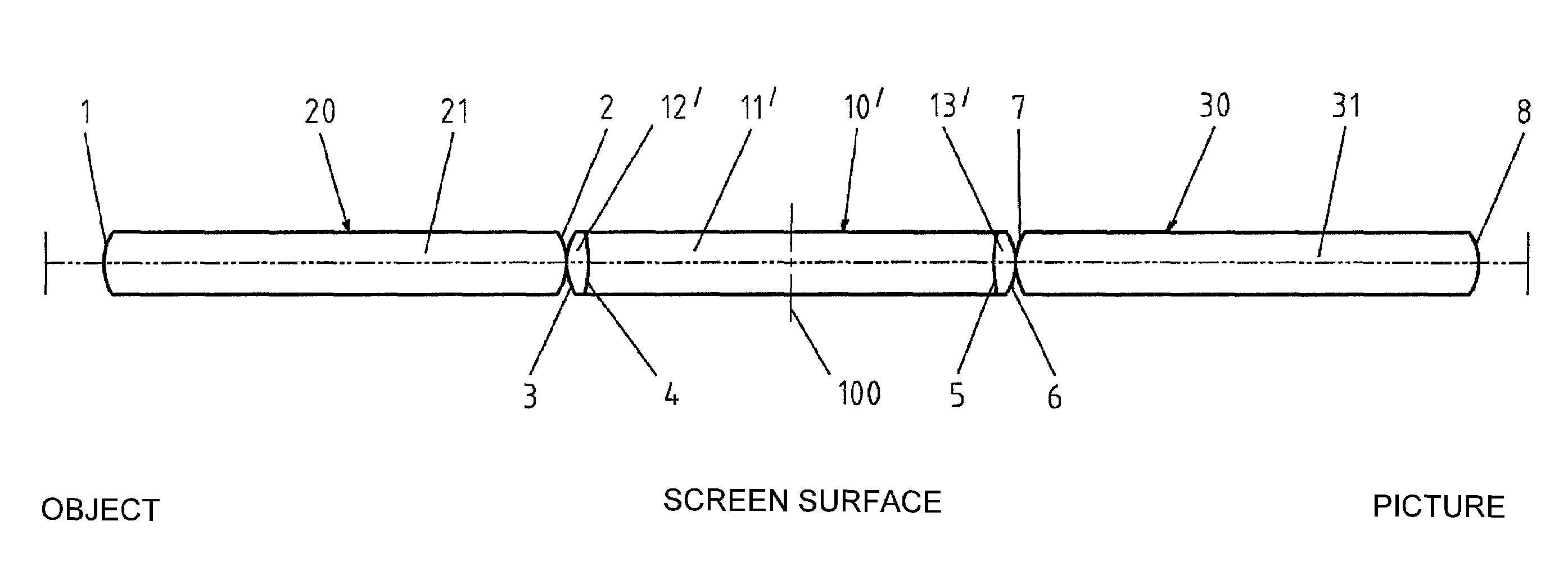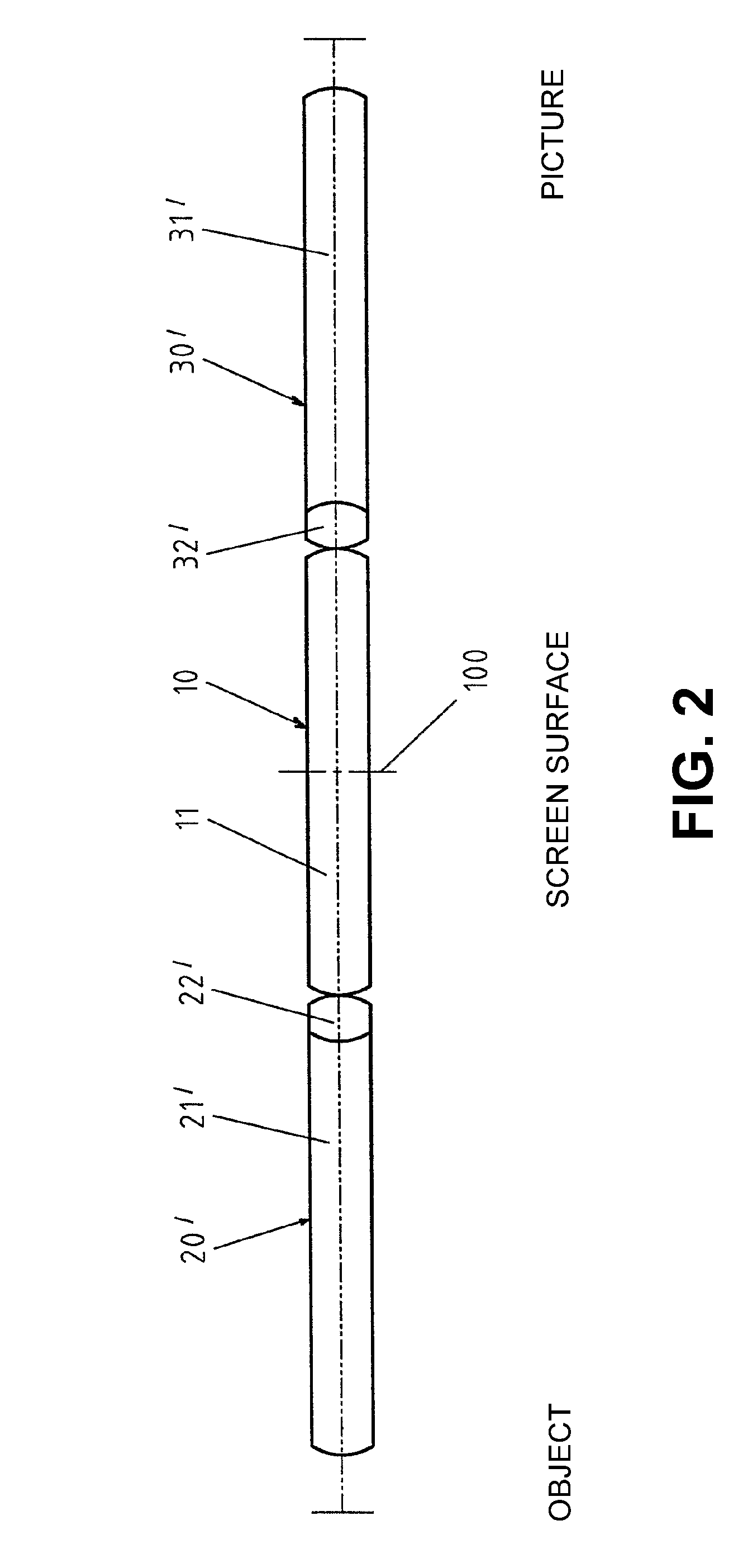Image transmission system from three rod lenses for rigid endoscopes
a technology of rigid endoscopes and transmission systems, applied in the field of rod lens systems as image transmission systems, can solve the problems of marked darkening of the proximal image and the distal starting image, and achieve the effects of reducing production costs, reducing imaging errors, and reducing the number of components
- Summary
- Abstract
- Description
- Claims
- Application Information
AI Technical Summary
Benefits of technology
Problems solved by technology
Method used
Image
Examples
first embodiment
[0030]In the first embodiment as seen in FIG. 1, on a center biconcave rod lens main element (11′), which is symmetrical with respect to the center plane (100) that is perpendicular to the optical axis, biconvex lens elements (12′, 13′) are cemented to both sides, while the two outer rod lenses (20, 30) are uncemented, identical, biconvex, and arranged symmetrically with respect to the aforementioned center plane (100). In addition, the center rod lens (10′) is longer than the two outer rod lenses (20, 30). These outer rod lenses are, according to the invention, vertex-to-vertex adjacent on the center connecting rod lens (10′). A distancing tube, to distance the individual lenses (10′, 20, 30) on the radial outside of these lenses, is thus not provided. In this embodiment and those that follow, all lens elements are of an optically homogenous material and all optically active surfaces (1, 2, 3, 4, 5, 6, 7, 8) of all indicated rod lenses are spherical. This embodiment has the advanta...
embodiment 1
[0031 can, for instance, be produced according to the following table:
[0032]
Index ofSurface No.RadiusDistanceRefractionAbbe NumberIntermediatePlane6.5AirImage134.752.01.6236.42−34.70Air353.52.51.5757.54−14.846.01.6236.4514.82.51.5757.56−53.50Air734.752.01.6236.48−34.76.5AirIntermediatePlane0AirImage
second embodiment
[0033]This embodiment can be modified as a second embodiment, as shown in FIG. 7, so that the center symmetrical rod lens main element is produced as biconvex element (11), and meniscus elements (12″, 13″), rather than convex lens elements, can be cemented to it. The center rod lens main element in this case can advantageously be produced similarly or even identically to the outer lenses.
PUM
 Login to View More
Login to View More Abstract
Description
Claims
Application Information
 Login to View More
Login to View More - R&D
- Intellectual Property
- Life Sciences
- Materials
- Tech Scout
- Unparalleled Data Quality
- Higher Quality Content
- 60% Fewer Hallucinations
Browse by: Latest US Patents, China's latest patents, Technical Efficacy Thesaurus, Application Domain, Technology Topic, Popular Technical Reports.
© 2025 PatSnap. All rights reserved.Legal|Privacy policy|Modern Slavery Act Transparency Statement|Sitemap|About US| Contact US: help@patsnap.com



